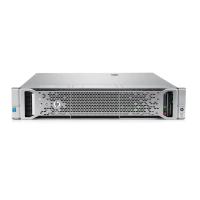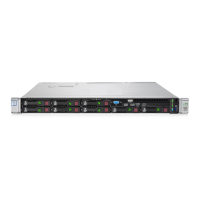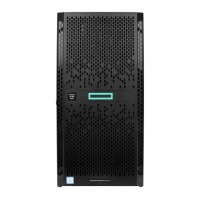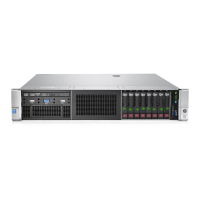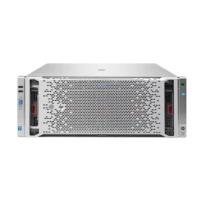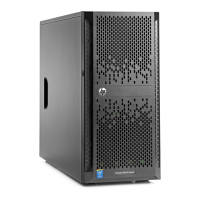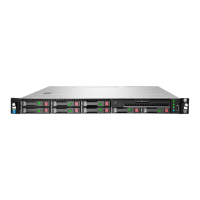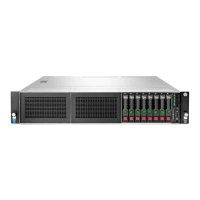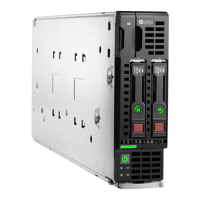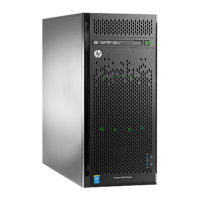NOTE: Secure Boot is only supported on UEFI-based servers in UEFI Boot Mode running
Windows 2012 and Windows 2012 R2.
• Recommended Settings—The HP Smart Storage Administrator polls any drives that are
present and builds an appropriate array for those drives. For example, if two drives are
connected to the Smart Array card, the setup defaults to RAID 1. HP recommends selecting
this option when initially provisioning a server.
CAUTION: Selecting this choice resets all disks (and arrays, if any are present). Because
no arrays or disk data are present during a first-time setup, this does not affect your server.
However, if you choose this option when reprovisioning your server, you can lose your
data and any disk arrays. For more information about the HP Smart Storage Administrator,
see the HP Smart Storage Administrator User Guide (http://www.hp.com/support/
SSA_UG_en).
• Customize—Opens the HP Smart Storage Administrator (after clicking the Continue right
arrow) and enables you to choose array settings. For more information about using the
HP SSA, see “Using HP Smart Storage Administrator (HP SSA)” (page 43).
NOTE: Some controllers other than HP Smart Array controllers can be configured through
HP Smart Storage Administrator.
4. Select the Target Controller you want to use from the drop-down menu if more than one is
available.
5. Confirm Fibre Channel and iSCSI configuration settings.
If discovered, the Fibre Channel and iSCSI information is displayed at the bottom of the screen.
Intelligent Provisioning supports installation to iSCSI targets and to shared storage devices.
Before starting an installation, the devices need to be set up outside of Intelligent Provisioning,
using options that appear during POST, or through their setup applications. In addition, the
boot controller order needs to be set correctly in the UEFI System Utilities before installation.
6. Confirm SD Card Configuration settings. If a supported SD card is installed, the device details
appear.
7. Click the Continue right arrow.
Step 2: OS Selection
In this screen, specify the OS family to install and the installation method.
Step 2: OS Selection 23
